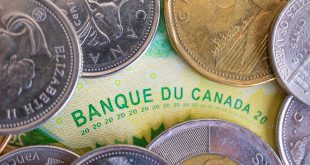After 25 basis-point rate cut decisions by the ECB and BoC, the Fed left rate unchanged (within 5.25%: 5.5% range) with one possible cut before yearend.
This decision bodes well for holders of assets in money market funds that provide returns exceeding dividend stocks and REITs, while their performance is much lower in terms of volatility and risk.
Amid higher for longer rates, funds’ instruments – Treasuries, deposit certificates, etc. – are generating above-average returns, yet they are not ideal for long-term wealth growth.
Money market funds invest in short-term securities to preserve capital, and provide income at prevailing market rates. By excellent credit quality and liquidity, the funds provide what one won’t find in other mutual funds; maintaining the net fixed asset value (NAV) per share of $1.
Money market funds are tied to interest rates and over the past year, rates have moved in tandem, one example is seven-day SEC yields of 5.3%, in the middle of the federal interest rate range of 5.25% to 5.5%.
The funds have a proven track record of saving money, surviving market turmoil and will only cost you a fairly low expense of 0.11%, but the minimum investment required is $3,000.
These tools are suitable for short-term goals: such as purchasing a car, an accommodation down payment, or emergency savings, as well as for conservative investors who prefer safety and liquidity over high growth.
Risks to consider:
Inflation: Purchasing power is susceptible if returns are less than the inflation rate.
Expenses: affect profits, especially with low returns.
Low insurance protection: They do not have federal insurance protection like savings accounts.
Missed opportunities: You may miss out on higher returns from other assets in the long term.
Before investing, experts recommend the following:
Compare the returns and expenses of different funds.
Read and understand the Fund’s prospectus carefully to understand the risks.
 Noor Trends News, Technical Analysis, Educational Tools and Recommendations
Noor Trends News, Technical Analysis, Educational Tools and Recommendations





